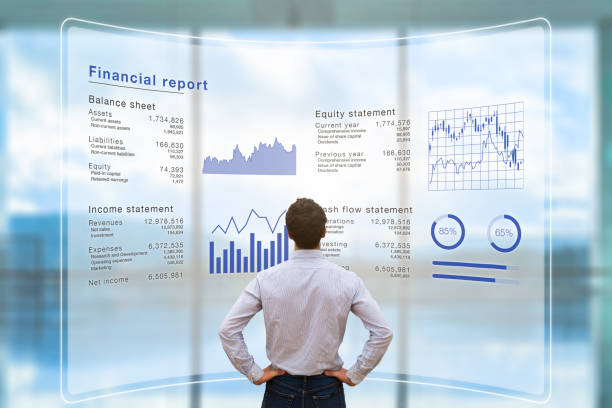Management accounting also is known as managerial accounting and can be defined as a process of providing financial information. And resources to the managers in decision making. Management accounting is only used by the internal team of the organization. This is the only thing that makes it different from financial accounting. In this process, financial information and reports such as. Invoice and financial balance statements are shared by the finance administration with the management team of the company.
The objective of management accounting is to use this statistical data and take better and more accurate decisions. On controlling the enterprise, business activities, and development.
Financial accounting is the recording and presentation of information for the benefit of the various stakeholders of an organization. Management accounting, on the other hand, is the presentation of financial data and business activities. Especially for the internal management of the organization. In this article, we will learn what is management accounting and its functions.
Introduction to Management Accounting
One of the definitions of Management accounting says that it is the application of professional skills and knowledge. In the preparation of financial and accounting information in a manner assisting the internal management in the formulation of policies. Including planning, and control of the operations of the firm.
The basic function of management accounting is to help the management make decisions. There is no fixed structure or format for it.
Financial accounting, costing, business analysis, economics, etc. are some tools and techniques of management accounting.
The only need for management accounting is that the data should serve its purpose, helping management take important business decisions.
How does Managerial Accounting Work?
Managerial accounting involves many aspects of accounting. It aims at improving the quality of information about business operation metrics. Information about the cost and sales revenue of goods and services of the company is useful to the managerial accountants. Cost accounting is a large subset of managerial accounting. Cost Accounting focuses on ascertaining a company’s total costs of production. By assessing the variable costs as well as fixed costs. It helps businesses in identifying and reducing unnecessary expenses and maximizing profits.
Types of Managerial Accounting:
1. Product Costing and Valuation
Costs can be bifurcated into variable, fixed, direct, or indirect costs. Cost accounting helps in measuring these costs as well as assigning overheads to each type of product or service. Product costing, thus, determines the total costs incurred in the production of a good or service.
Managerial accounting helps in calculating overhead charges to assess the expenses of the production of a good or service. The overhead expenses can be allocated on the basis of the number of goods produced, the number of hours run. The number of machine-hours, the square footage of the facility or any other activity drivers related to production. Managerial accounting also uses direct costs for the purpose of valuing the cost of goods sold and inventory.
2. Cash Flow Analysis
Cash flow analysis helps in determining the cash impact of business decisions. Most companies follow the accrual basis of accounting to record their financial information. As it provides a more accurate picture of a company’s true financial position. However, it also makes it difficult to measure the true cash impact of a single financial transaction. Implementing capital management strategies, optimizing cash flow and ensuring that the company has enough liquid assets to cover the short-term. While performing the cash flow analysis, one needs to consider the cash inflow or outflow of a specific business decision.
3. Inventory Turnover Analysis
Inventory turnover involves a calculation of how many times the inventory has been sold and replaced with time. It helps businesses in making better decisions on pricing, manufacturing, marketing, and purchasing inventory. Inventory Turnover analysis also helps in identifying the carrying cost of inventory. The carrying cost of inventory is the amount of expense a company incurs to store unsold items.

4. Constraint Analysis
Reviewing the constraints within a production line or sales process is also a part of Managerial accounting. It involves determining where bottlenecks occur and calculating the impact of these constraints on revenue, profit, and cash flow. This information is useful to implement changes and improve efficiencies in the production or sales process.
5. Financial Leverage Metrics
Financial leverage refers to the use of borrowed funds in order to acquire assets and increase their return on investments. Through balance sheet analysis, the company’s debt and equity mix to put leverage to its most optimal use. Performance measures such as return on equity, debt to equity, and return on invested capital. It helps the managers to identify key information about borrowed capital.
6. Accounts Receivable (AR) Management
Accounts Receivables invoices are categorized by the length of time they have been outstanding in the accounts receivable aging report. It may list all outstanding receivables less than 30 days, and 90+ days. It helps the managers to ascertain whether certain customers are becoming credit risks. If a customer routinely pays late, management may reconsider doing any future business on credit with that customer.
7. Budgeting, Trend Analysis, and Forecasting
Budgets are a quantitative expression of the company’s plan of operation. Performance reports are used to study the deviations of actual results from budgets. The positive or negative deviations from a budget are analyzed to make appropriate changes going forward with future planning.
Managerial accounting also helps in analyzing information related to capital expenditure decisions. With the use of standard capital budgeting metrics, such as NPV and IRR. It assists decision-makers on whether to invest in capital-intensive projects or purchases or not.
Managerial accounting also includes reviewing the trendline for certain expenses as well as investigating unusual deviations.
Advantages and Objectives of Management Accounting
There are many objectives but the prime objective is to assist the management team of an organization. In improving the quality of their decisions. The purpose of management accounting is to help the managerial team with financial information. So that they can execute business operations and activities more efficiently. Following is the list of all benefits of management accounting –
- Decision Making
- Planning
- Controlling business operations
- Organizing
- Understanding financial data
- Identifying business problem areas
- Strategic Management




Hii